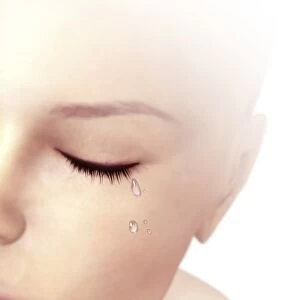Homo heidelbergensis arthritic jaw C015 / 6562
![]()

Wall Art and Photo Gifts from Science Photo Library
Homo heidelbergensis arthritic jaw C015 / 6562
Homo heidelbergensis arthritic jaw. Close-up of the condyloid process of the lower jaw (mandible) from fossilised remains of Homo heidelbergensis. This specimen shows signs of arthritis (joint wear and tear). This fossil specimen is from the Sima de los Huesos site, Sierra de Atapuerca, Spain. This is a UNESCO World Heritage Site, containing the earliest human remains found in Europe. Homo heidelbergensis (Heidelberg Man) is a extinct hominin species from the same genus as modern humans. Like other early humans, they had complex social structures and lived in family groups. They lived around 600, 000 to 400, 000 years ago
Science Photo Library features Science and Medical images including photos and illustrations
Media ID 9212895
© JAVIER TRUEBA/MSF/SCIENCE PHOTO LIBRARY
Arthritis Atapuerca Dental Fossil Fossil Human Fossil Man Heidelberg Man Homo Heidelbergensis Human Evolution Lower Jaw Mandible Mandibular Osteology Palaeoanthropological Palaeoanthropology Palaeolithic Paleoanthropological Paleolithic Pleistocene Prehistoric Prehistory Sima De Los Huesos Spain Specimen Stone Age Condition Cutouts Disorder Palaeontology
EDITORS COMMENTS
This print showcases the arthritic jaw of Homo heidelbergensis, an extinct hominin species closely related to modern humans. The close-up image focuses on the condyloid process of the lower jaw, revealing clear signs of arthritis and joint wear and tear. This fossil specimen was discovered at the Sima de los Huesos site in Sierra de Atapuerca, Spain, a UNESCO World Heritage Site renowned for containing Europe's earliest human remains. Homo heidelbergensis lived approximately 600,000 to 400,000 years ago during the Pleistocene epoch. Like other early humans, they possessed complex social structures and lived in family groups. This remarkable find sheds light on their medical history and provides valuable insights into prehistoric human evolution. The black background enhances the visual impact of this historical artifact while emphasizing its significance as a scientific discovery. With meticulous attention to detail, this studio shot captures every intricate feature of the mandible with precision. As we examine this fossilized jawbone from Homo heidelbergensis, we are reminded of our shared ancestry with these ancient beings and gain a deeper understanding of our own evolutionary journey. It serves as a testament to humanity's relentless pursuit of knowledge through paleontology and offers glimpses into our distant past that continue to shape our present understanding of ourselves as a species.
MADE IN AUSTRALIA
Safe Shipping with 30 Day Money Back Guarantee
FREE PERSONALISATION*
We are proud to offer a range of customisation features including Personalised Captions, Color Filters and Picture Zoom Tools
SECURE PAYMENTS
We happily accept a wide range of payment options so you can pay for the things you need in the way that is most convenient for you
* Options may vary by product and licensing agreement. Zoomed Pictures can be adjusted in the Cart.




